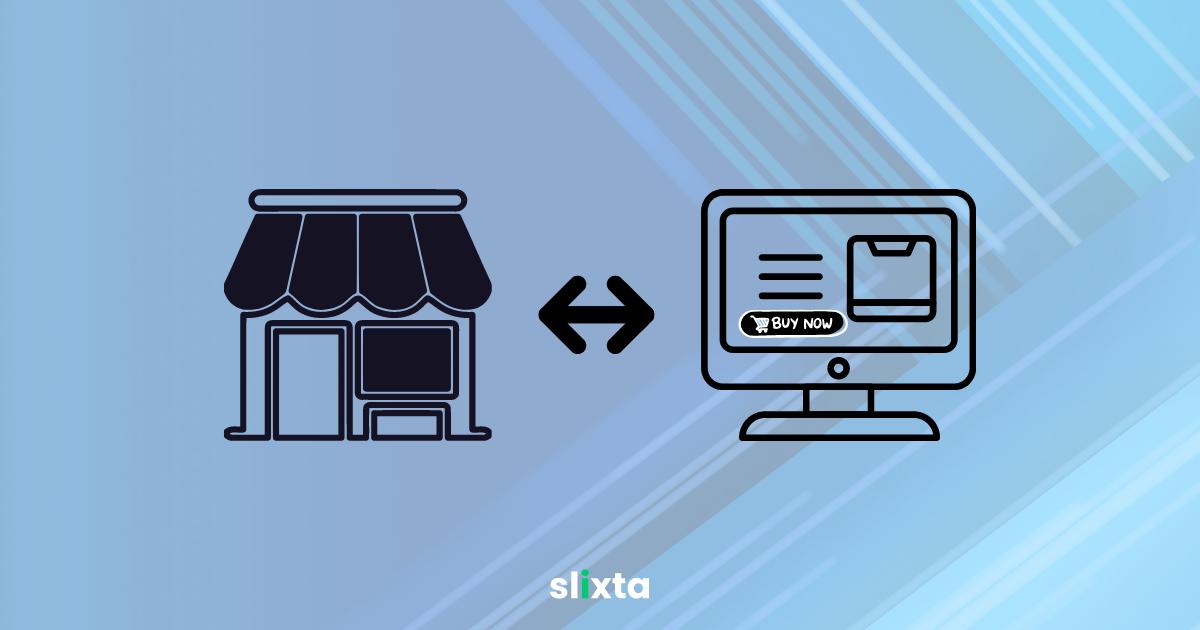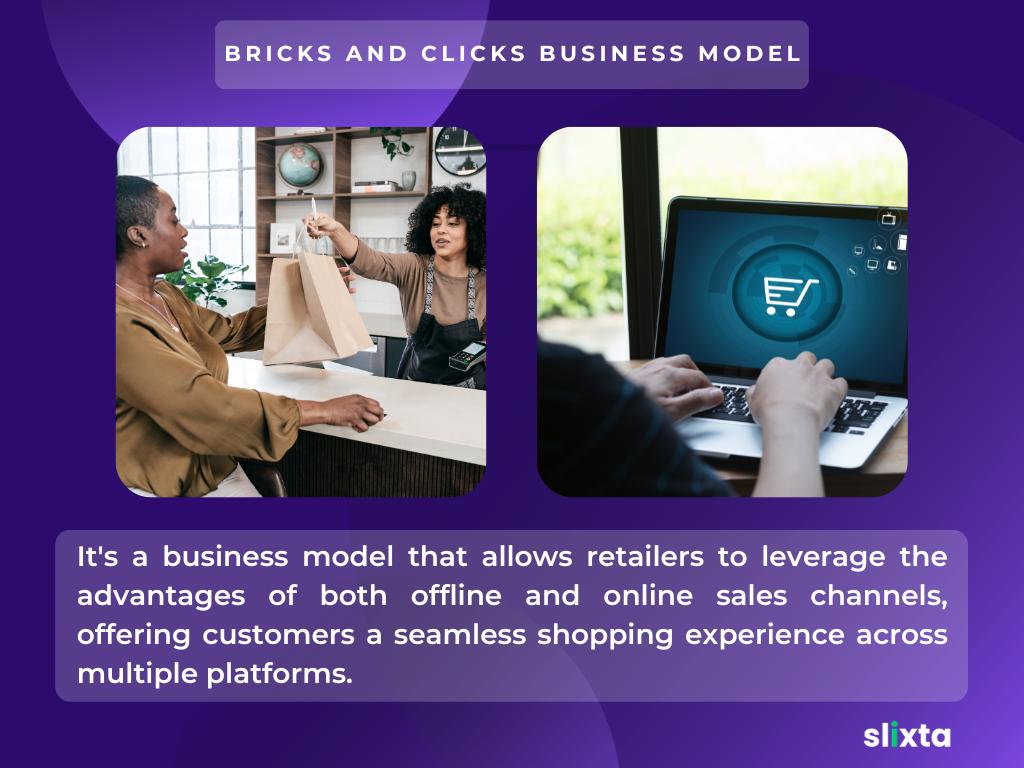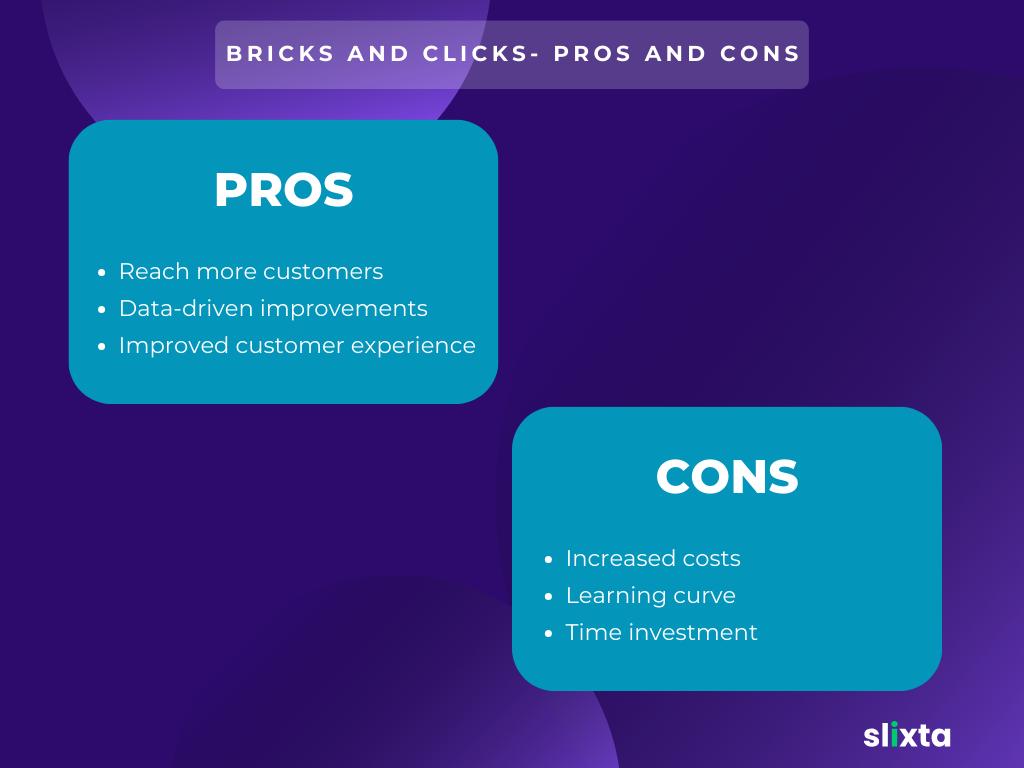
A bricks and clicks business refers to a company that operates both physical stores (bricks) and online platforms (clicks). It combines the advantages of traditional retail with the convenience of e-commerce.
In an era where the retail landscape is transforming remarkably, businesses are constantly seeking innovative strategies to thrive in the digital age.
One such strategy that has gained considerable popularity is the bricks-and-clicks business model.
But what exactly is bricks and clicks business, and how does it operate?
In this blog, we will delve into the intricacies of the bricks and clicks model, exploring its mechanics, advantages, and implementation strategies. Whether you're a business owner looking to expand your reach or simply curious about the evolving dynamics of the retail industry, join us as we unravel the workings of this hybrid approach to commerce.
What Is Brick-and-Click?
Brick-and-click, also known as bricks and clicks or clicks and bricks, refers to the combination of a physical retail location (the brick) and an ecommerce sales channel, or online store (the click). It's a business model that allows retailers to leverage the advantages of both offline and online sales channels, offering customers a seamless shopping experience across multiple platforms.

What Is the Bricks and Clicks Business Model?
The bricks and clicks business model is an integrated retail strategy that combines physical and online operations into a single cohesive approach. By embracing this model, businesses can cater to a wider range of customer preferences and capitalize on the benefits of both traditional retail and ecommerce. It offers customers the convenience of online shopping while still providing the option to visit a physical store.
Examples of Bricks and Clicks Businesses
Numerous businesses have successfully implemented the bricks-and-clicks model. Let's look at some prominent examples:
Walmart
Walmart is a prime example of a successful bricks and clicks business. The company operates a vast network of physical stores across the globe while also maintaining a robust online presence. Customers have the option to shop at their local Walmart store or conveniently order products through the Walmart website or mobile app. Walmart offers services like online ordering with in-store pickup, home delivery, and even grocery delivery. By seamlessly integrating their physical stores with their online platform, Walmart provides customers with a variety of shopping options and a consistent experience across channels.
Warby Parker
Warby Parker, an eyewear retailer, started as an online-only business but later adopted a bricks and clicks approach. They opened physical retail locations known as "Warby Parker stores" where customers can try on glasses and receive personalized assistance. In addition, customers can also browse and purchase eyewear through the Warby Parker website. The company leverages technology by offering a virtual try-on feature on their website, allowing customers to upload a photo and virtually try on different frames. By combining the convenience of online shopping with the tactile experience of trying on glasses in-store, Warby Parker successfully caters to a wider range of customer preferences.
Target
Target, a well-known retail chain, has embraced the bricks and clicks model to enhance customer experiences. Target offers customers the option to shop in-store, order products for same-day delivery through Shipt (a delivery service acquired by Target), or make purchases online for either home delivery or in-store pickup. They have also invested in technology to streamline the in-store experience, such as using mobile apps for product location and self-checkout. By blending its physical stores with digital capabilities, Target caters to various customer needs and provides a seamless shopping journey.
Best Buy
Best Buy, a leading electronics retailer, has successfully implemented the bricks and clicks model to adapt to changing consumer behavior. In addition to their physical stores, Best Buy offers customers the convenience of online shopping through their website and mobile app. They provide features like product reviews, detailed specifications, and price comparisons to aid in customer decision-making. Best Buy has also introduced services like curbside pickup and ship-from-store, allowing customers to access products quickly and efficiently. By leveraging their extensive physical store network and integrating it with a robust online platform, Best Buy has established itself as a trusted destination for electronics.
How Does the Bricks and Clicks Business Model Work?
The bricks and clicks business model operates on the principles of flexibility, a unified shopping experience, improved customer satisfaction, and brand building. It offers customers the choice of purchasing products online or in-store, with options for delivery or in-person pickup. Returns can also be streamlined, allowing customers to make returns either in the physical store or by mail.
To create a unified shopping experience, businesses need to sync their inventory across channels. This enables customers to check product availability before making a purchase, whether online or in-store. By focusing on customer satisfaction and providing the best of both worlds, businesses can enhance their brand and facilitate growth.
Pros and Cons of the Bricks and Clicks Business Model
Like any business strategy, the bricks-and-clicks model has its pros and cons. Let's examine them:
Pros:
- Reach more customers: With a combination of physical and online channels, businesses can expand their customer base and access global consumers.
- Improved customer experience: The bricks and clicks model allows retailers to cater to a wide range of customer preferences, providing convenience and flexibility.
- Analytics-driven improvements: Integration of web analytics tools can enhance both online and offline offerings, leading to data-driven decision-making.
Cons:
- Increased costs: Operating both physical and online channels incurs additional overhead costs, such as security systems and website management expenses.
- Learning curve: Adapting to a new sales channel can present challenges for businesses that are not familiar with ecommerce or physical retail.
- Time investment: Managing inventory, aligning online and offline experiences, and implementing consistent branding requires significant time and effort.

Wrapping Up
The bricks and clicks business model offers a dynamic and customer-centric approach to retail. By combining the strengths of physical stores and online channels, businesses can enhance their reach, improve customer experiences, and drive growth.
However, it's crucial to carefully evaluate the feasibility and resource requirements before implementing this model. With strategic planning, effective integration, and continuous adaptation, you can unlock the full potential of the bricks-and-clicks model and stay ahead in the ever-evolving retail landscape.
Frequently Asked Questions About Brick-and-Click
Is the bricks and clicks model suitable for all types of businesses?
While the bricks and clicks model can be beneficial for many businesses, it may not be suitable for every industry or business size. It's important to assess your target market, competition, and resources to determine if this model aligns with your specific goals and capabilities.
How can I effectively integrate my physical store with an online presence?
To successfully implement the bricks and clicks model, start by creating a user-friendly and responsive website. Ensure that your online store reflects your brand identity and provides a seamless shopping experience. Additionally, synchronize your inventory, offer convenient delivery options, and provide in-store pickup to bridge the gap between your physical and online operations.
What technology solutions can support a bricks-and-clicks business?
Investing in an integrated customer relationship management (CRM) system can help manage customer data, track purchases, and provide a personalized experience. Ecommerce platforms and inventory management systems are also essential for efficient online operations. Explore various software solutions available in the market and choose the ones that best fit your business needs.
How can I measure the success of my bricks-and-clicks strategy?
Monitor key performance indicators (KPIs) such as online and in-store sales, website traffic, conversion rates, customer satisfaction, and repeat purchases. Regularly analyze and compare data from both channels to gain insights into the effectiveness of your strategy. Adjust and optimize your approach based on these metrics to continually improve your business outcomes.
For more valuable insights and information, check out these recommended blogs:
